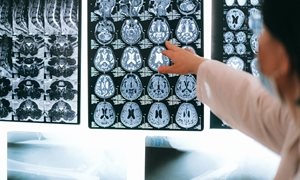 In Prostate Cancer and Prostatic Diseases Katja Aben and colleagues showed that most Dutch patients with very low risk prostate cancer are managed with active surveillance, thereby delaying and possible avoiding therapy and its side effects. Variation in the proportion of patients with active surveillance in individual hospitals exists but is limited. These results are based on the nationwide initiative ProZIB (ProstaatkankerZorg In Beeld).
In Prostate Cancer and Prostatic Diseases Katja Aben and colleagues showed that most Dutch patients with very low risk prostate cancer are managed with active surveillance, thereby delaying and possible avoiding therapy and its side effects. Variation in the proportion of patients with active surveillance in individual hospitals exists but is limited. These results are based on the nationwide initiative ProZIB (ProstaatkankerZorg In Beeld).
To provide insight in the treatment variation of very-low-risk prostate cancer patients and to assess the role of hospital-related factors.
Methods
All patients diagnosed with very-low-risk prostate cancer (cT1c-cT2a, PSA < 10 ng/ml, Gleason score <7 and <3 positive cores) in 2015 and 2016 were identified through the population-based Netherlands Cancer Registry. Multilevel logistic regression analyses were performed to examine the crude and case-mix adjusted probability of immediate treatment vs. active-surveillance (AS) according to hospital of diagnosis and to evaluate the effect of patient-, tumour-, and hospital-related factors.
Results
In all, 2047 (85.4%) of the 2396 patients with very-low-risk prostate cancer were managed with AS. The crude proportion of patients with AS varied from 33.3 to 100% between hospitals. Case-mix adjusted probability varied from 71 to 97%. Tumour stage cT2a vs. cT1c (OR 2.0, 95%CI 1.1-3.6), two vs. one positive core (OR 2.8, 95%CI 1.6-4.7), diagnostic MRI (OR 2.8, 95%CI 1.5-5.2), discussion of a patient in a multi-disciplinary team (OR 2.2, 95%CI 1.1-4.5), discussion of treatment options with the patient (OR 3.3, 95%CI 1.5-7.4) and type of hospital (non-university referral hospital vs. community hospital: OR 0.5, 95%CI 0.2-0.9) were associated with immediate treatment.
Conclusion
The majority of Dutch very-low-risk prostate cancer patients is managed with AS but variation between hospitals exists. Part of the variation is explained by patient- and tumour characteristics but also hospital-related factors play a role. This implies that clinical practice could be improved.
Publication
Immediate treatment vs. active-surveillance in very-low-risk prostate cancer: the role of patient-, tumour-, and hospital-related factors.
Jansen H, van Oort IM, van Andel G, Wijsman BP, Pos FJ, Hulshof MCCM, Hulsbergen-van de Kaa CA, van Leenders GJLH, Fütterer JJ, Somford DM, Busstra MB, van Moorselaar RJA, Kiemeney LA, Aben KKH.
Katja Aben is member of theme Urological cancers.
Related news items

Body composition is more important than BMI for renal cancer survival rates
11 January 2022 Body composition is important for survival rates in renal cell cancer. Research from the Radboudumc shows that low muscle quality and low organ fat are associated with poor survival. This involves different stages of renal cancer, ranging from stage I-III to stage IV. go to page
Turbo Grants for four medical-technical research projects
19 October 2021 Four TURBO grants were recently awarded to new technical-medical research proposals. The grants are part of the TURBO program, a collaboration between the University of Twente (TechMed Centre) and the Radboudumc. go to page
Research into treatment for bladder pain syndrome will now be reimbursed
4 August 2021 Bladder pain syndrome, also called interstitial cystitis, is a chronic benign condition of the urinary bladder go to page
Millions of euros for study of laser treatment for glioblastoma
2 April 2021 A research group from Radboudumc and UMC Utrecht is to investigate laser treatment of a rare brain tumor, glioblastoma. 3.9 million euros has been made available for the research by Zorginstituut Nederland and ZonMw, under the auspices of the Subsidy Scheme for Promising Care. go to page
Growing consensus in Europe on prostate MRI
4 June 2020 A group of radiologists and urologists has made a new set of recommendations to improve the quality of prostate MRIs. go to page
Jurgen Fütterer appointed Professor of Image-Guided Oncological Interventions
26 February 2020RIHS researcher Fütterer is an interventional radiologist and an expert in the field of cancer imaging techniques, image-guided interventions and robotics. He is also Professor at the Robotics and Mechatronics Group at the University of Twente.
go to page